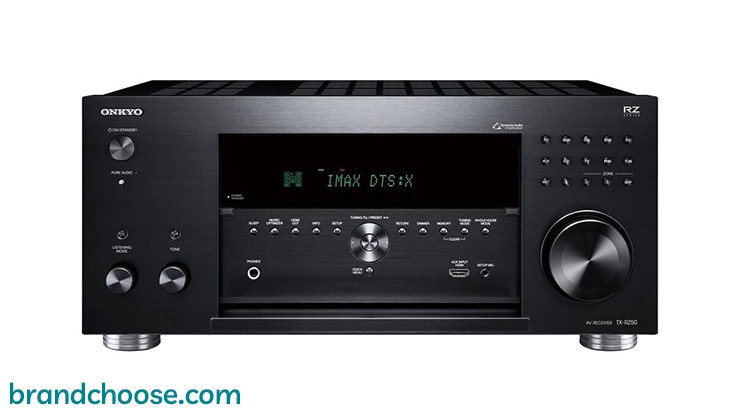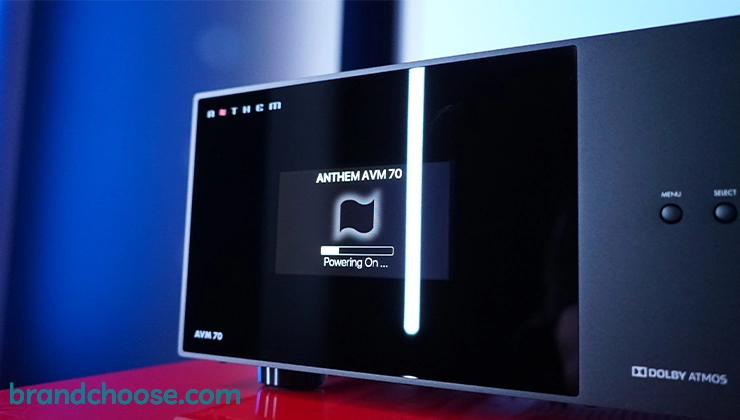
-
Exceptional sound precision with Dirac Live and THX certification.
-
Broad product lineup catering to all budgets, from entry-level to high-end.
-
Excellent value for money in mid-range and high-end models.
-
Strong focus on multi-room audio support and flexible configurations.
-
Durable, rugged designs built for long-term reliability.
-
Comprehensive technical support with longer warranty options.
Onkyo AV Receivers
In the world of home entertainment, the pursuit of captivating audio experiences often leads enthusiasts to the world of audio-visual (AV) receivers. Among the many options available, Onkyo AV receivers have emerged as icons of innovation, performance, and dependability. This article will delve into the unique features, pros, cons, and reasons why Onkyo AV receivers deserve a spot in your home theater setup. Understanding Onkyo AV Receivers Onkyo AV receivers form the backbone of your home entertainment system. They are meticulously designed to decode, amplify, and distribute audio and video signals with precision and clarity. Armed with advanced technology and a dedication to audio excellence, Onkyo receivers offer an immersive audio-visual experience that takes you to the heart of the action.

Connectivity Options
Onkyo, a well-known brand in the AV receivers category, offers a wide range of connectivity options that align with the latest technologies. Their AV receivers, such as the TX-NR696 and TX-NR595, support multiple HDMI inputs and outputs, digital audio inputs, and analog audio inputs. The receivers also have built-in Wi-Fi for wireless connectivity, and Bluetooth for streaming audio from compatible devices. They also support AirPlay 2 and Chromecast, allowing users to stream music, internet radio, and podcasts from their mobile devices directly to the receiver. Compared to other brands, Onkyo stands out for its inclusion of both legacy and cutting-edge connectivity options. For instance, the TX-NR696 includes a phono input for turntables, which is a feature not commonly found in modern AV receivers. However, one potential downside is that Onkyo's AV receivers do not have HDMI 2.1 ports, which are necessary for passing through 8K video signals. Brands like Denon and Marantz have already started including HDMI 2.1 ports in their AV receivers. Despite this, Onkyo's comprehensive connectivity options and support for various streaming technologies make it a competitive choice in the AV receivers market.
Anthem AV Receivers
In the realm of home entertainment, the pursuit of superior audio quality drives enthusiasts to seek out the best audio-visual (AV) receivers. Among the multitude of options available, Anthem AV receivers stand out as exemplars of innovation, performance, and craftsmanship. In this article, we delve into the realm of Anthem AV receivers, unraveling their unique features, advantages, disadvantages, and why they deserve consideration as the centerpiece of your home theater setup.
Anthem AV receivers are high-performance audio-visual receivers designed to deliver exceptional sound quality and immersive home theater experiences. Manufactured by Anthem Electronics, a Canadian-based company known for its commitment to audio excellence, Anthem AV receivers are renowned for their precision engineering, advanced features, and uncompromising performance. These receivers serve as the central hub of a home theater system, decoding audio signals from various sources such as Blu-ray players, gaming consoles, streaming devices, and more. Anthem AV receivers amplify and process these signals to deliver high-quality audio to connected speakers, creating immersive surround sound experiences for movies, music, and gaming.












